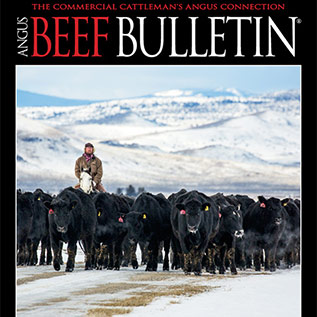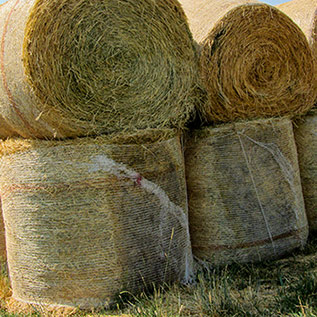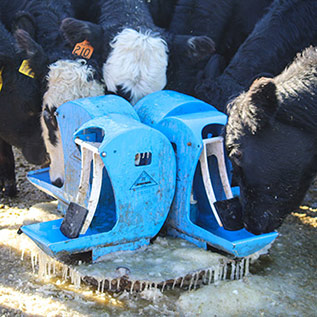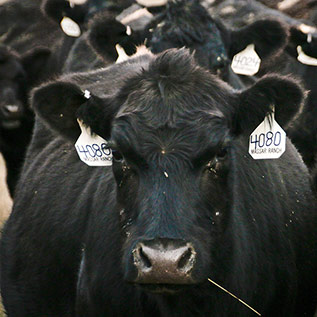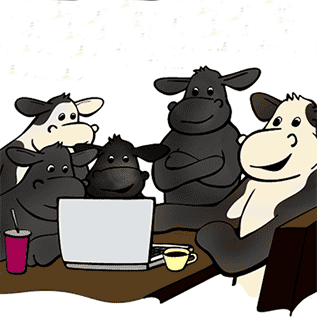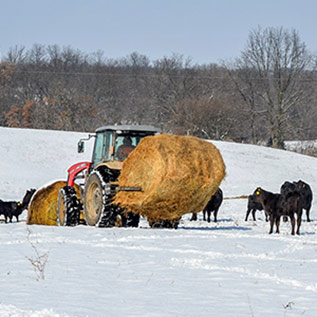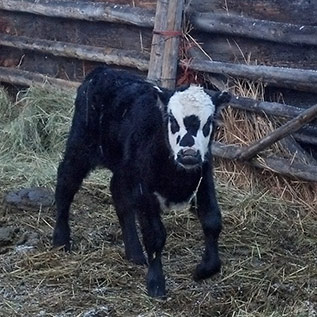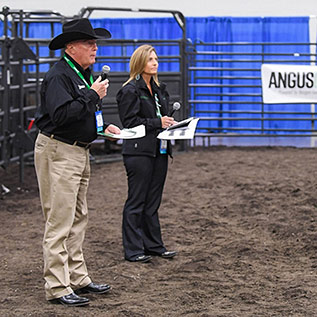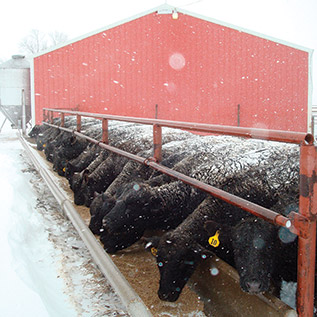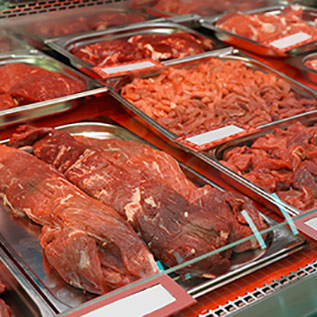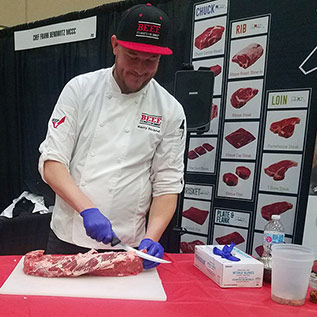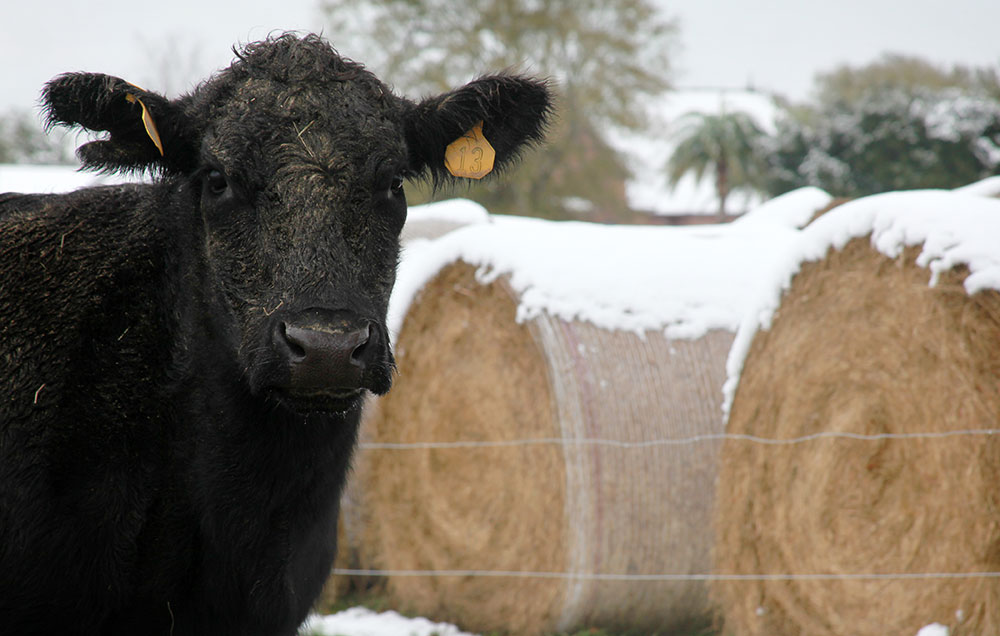
How Much Hay Will A Cow Consume?
Estimating a cow’s forage needs is imperative for winter feeding.
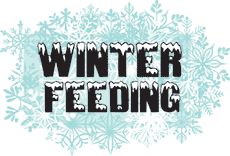
Estimating forage usage by cows is an important part of the task of calculating winter feed needs. Hay or standing forage intake must be estimated in order to make the calculations. Forage quality will be a determining factor in the amount of forage consumed. Higher-quality forages contain larger concentrations of important nutrients, so animals consuming these forages should be more likely to meet their nutrient needs from the forages. Also cows can consume a larger quantity of higher-quality forages.
Higher-quality forages are fermented more rapidly in the rumen, leaving a void that the animal can refill with additional forage. Consequently, forage intake increases. For example, low-quality forages (below about 6% crude protein) will be consumed at about 1.5% of body weight (on a dry-matter basis) per day. Higher-quality grass hays (above 8% crude protein) may be consumed at about 2.0% of body weight. Excellent forages, such as good alfalfa, silages or green pasture may be consumed at the rate of 2.5% dry matter of body weight per day.
The combination of increased nutrient content and increased forage intake makes high-quality forage very valuable to the animal and the producer. With these intake estimates, now producers can calculate the estimated amounts of hay that need to be available.
Using an example of 1,200-pound (lb.) pregnant spring-calving cows, let’s assume that the grass-hay quality is good and tested at 8% crude protein. Cows will voluntarily consume 2.0% of body weight or 24 lb. per day. The 24 lb. is based on 100% dry matter. Grass hays will often be 7% to 10% moisture. If we assume that the hay is 92% dry matter or 8% moisture, then the cows will consume about 26 lb. per day on an “as-fed” basis.
Unfortunately, we also have to consider hay wastage when feeding big round bales. Hay wastage is difficult to estimate, but generally has been found to be from 6% to 20% (or more). For this example, let’s assume 15% hay wastage. This means that approximately 30 lb. of grass hay must be hauled to the pasture for each cow each day that hay is expected to be the primary ingredient in the diet.
After calving and during early lactation, the cow may weigh 100 lb. less, but will be able to consume about 2.6% of her body weight (100% dry matter) in hay. This would translate into 36 lb. of “as-fed” hay per cow per day necessary to be hauled to the pasture. This again assumes 15% hay wastage. Accurate knowledge of the average cow size in your herd, as well as the average weight of your big round bales becomes necessary to predict hay needs and hay feeding strategies.
Big round hay bales will vary in weight. Diameter and length of the bale, density of the bale, type of hay, and moisture content all will greatly influence weight of the bale. Weighing a pickup or trailer with and without a bale may be the best method to estimate bale weights.
Editor’s note: This article is reprinted with permission from the Nov. 12 Cow-Calf Corner, a newsletter published by the Oklahoma Cooperative Extension Service, for which Glenn Selk is an emeritus extension animal scientist.



